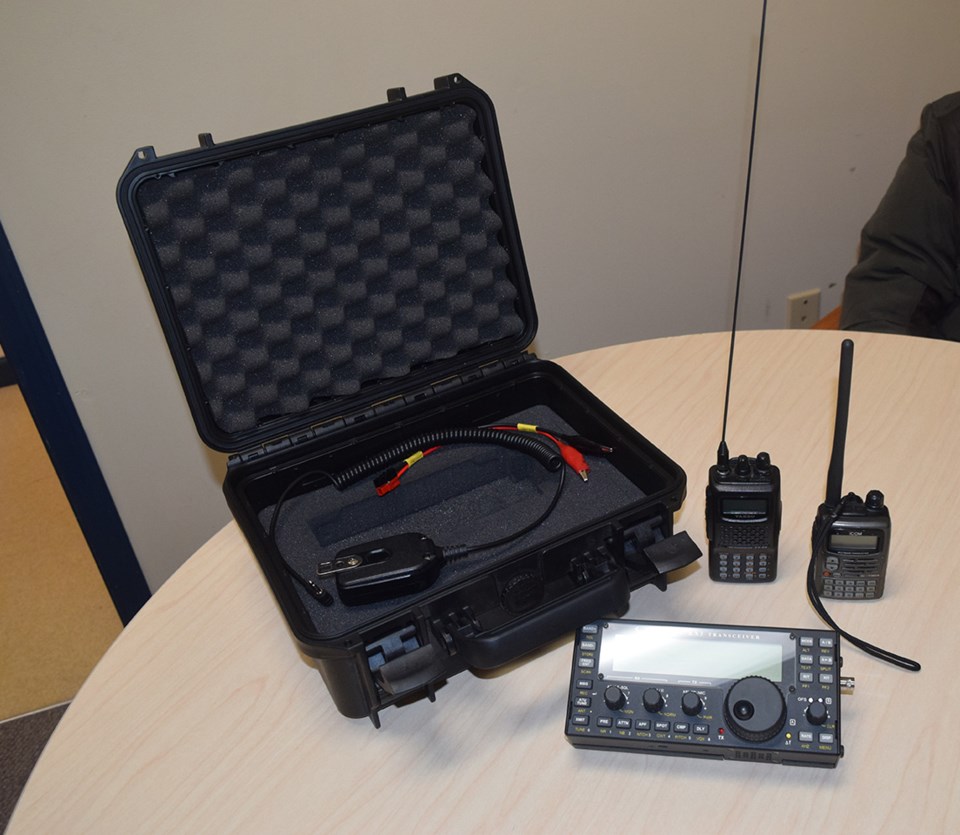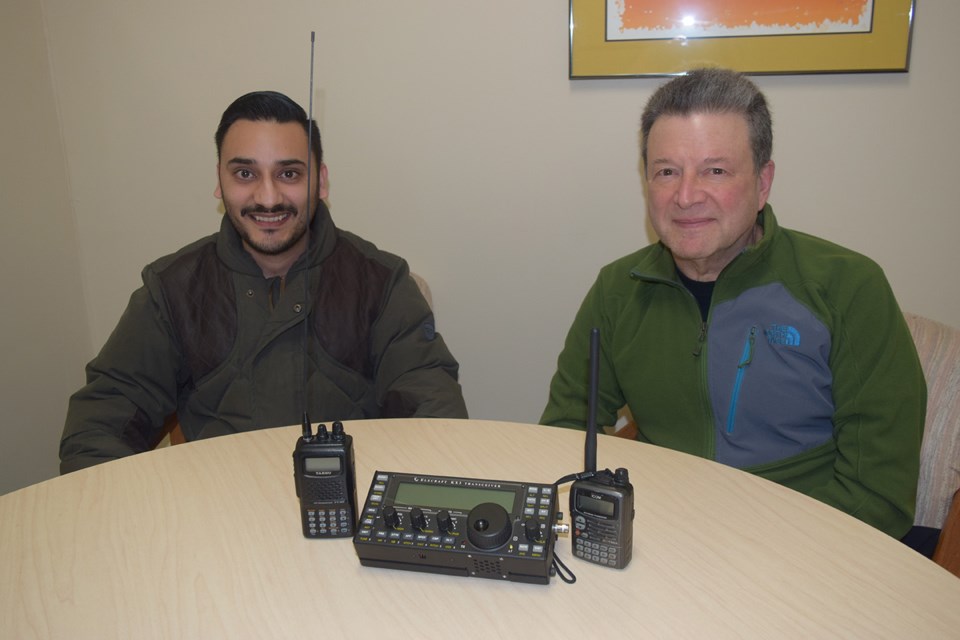It is like an invisible, global society hiding in plain sight. For many, the idea of an amateur radio club conjures retro images of 1970s fathers tinkering in the shop or long-haul truckers on their CB radios in the 1980s. But amateur radio enthusiasts are alive and well in the internet age and play an essential role in emergency planning for communities.
They have a lot of fun with it too.
The Squamish Amateur Radio Club, which started in the early 1990s, currently has 12 active members.
The Chief sat down with Gursimran Gill, secretary of the volunteer club and fellow member and long-time radio enthusiast Tom Gilchrist for a chat about the hobby and its wide-reaching applications.
What follows is an edited version of that conversation.
Q: Tom, you have been involved with the Squamish club for two decades?
A: (Tom:) I got involved in 1992 when I moved to Squamish. Membership has kind of gone up and down over the years, but we have been steady at about 12 for more than 10 years.
Q: Can you explain to people who don’t know, what amateur radio is?
A: (Tom) The way it fundamentally works is rather than having centralized communication centres, such as microwave towers and that sort of thing, amateur radio is like this kind of invisible network of communication. Almost every amateur radio operator has a radio station of some sort at his house so there is this big network of radio stations spread out everywhere that can come to life.
There are a lot of different modes of operation. A good place for some research into amateur radios is on Wikipedia. Look up “amateur radio” and even that will give you a really good overview of what it is all about.
Q: I read the club helps with big races? How?
A: (Tom) The main thing we helped with was the Test of Metal mountain bike race. We were involved with that for every year it existed.
Basically, we did communication around the course. One of the big things that the club has done, in addition to the safety communication, is supplying race progress feedback to John French, who was the race announcer. It gave him something to talk about such as who is in the lead, and that sort of thing.
We would have about eight or nine people stationed around the course and that information was all reported back to a central race-control. We could also give information to Squamish Search and Rescue, of course.
Q: Can you explain to me the role amateur radio operators play in emergency planning and management?
A: (Tom) In some parts of the world, amateur radio plays much more of a dominant role for backup communication. For example, years ago I lived in Barbados — a small Caribbean Island — and there were no telecommunications cables that came to that island. They relied on a single, satellite ground station for all of their telecommunication and so amateur radio was recognized by the government as the back-up plan if anything happened, such as a hurricane or something like that if their air and ground communication got wiped out. So, subsequently, their government subsidized amateur radio. They had a beautiful clubhouse, lots of antennas and they put on courses. They were really well set up there because it was important. Here there are alternate means of communication.
Q: It is a pretty broad-based hobby, is there a type of person involved with it?
A: (Tom) There are a lot of astronauts who are amateur radio enthusiasts — there’s radio on the International Space Station and people make contact with them — communication engineers are involved with it too.
There’s been royalty involved. Years and years ago, one of the former kings of Jordan, King Hussein, was into it. People actually talked to him.
One of the rarest station operators I ever contacted was a Tom Christian on the Pitcairn Islands in the South Pacific. The people there are direct descendants of Fletcher Christian, of Mutiny on the Bounty fame. There’s another very popular aspect of amateur radio using the HF modes, which is called DXing (Distance communications) and there are people who make it almost their life’s ambition to contact these very rare stations in exchange for a QSL cards — similar to postcards that are a confirmation of a contact.
There are even expeditions to go to some of these rare little islands where they have a really unique call sign.
Q: Gursimran, you are a young guy who would have grown up with the internet, so how did you get involved in this hobby?
A: (Gursimran) It was more than two years ago now and I was reading about it and became really fascinated. I love it so far.
My wife and love to travel a lot so whenever we travel, we contact different amateur radio people in that place. It is really nice to form relationships. When I was in California, for example, I spoke to someone on the air and he is still in touch with me.
It is a world community.
I am also pretty excited about the way amateur radio is used in emergencies. Recently, our club participated in “Operation Gumboots” an evacuation scenario in Brackendale [with local and regional first responders and agencies]. We also participated in a North America-wide emergency exercise.
There are scenarios created and we pass on messages — you have to test if you are able to maintain your communication links throughout different areas.
It tests the reliability of the whole network. It went well.
Q: Is it an expensive hobby to get into?
A: (Tom) It has actually gotten a lot cheaper over the years. You can get a decent VHF radio for less than $200. There are some people that might have $50,000 worth of gear and towers that are 60 feet with huge antennas on them. The sky is the limit for deluxe radios.
A: (Gursimran) It depends on what features and capabilities and bands it covers.
Anyone interested in getting involved with the club or learn more about it, go to squamisharc.wordpress.com.





